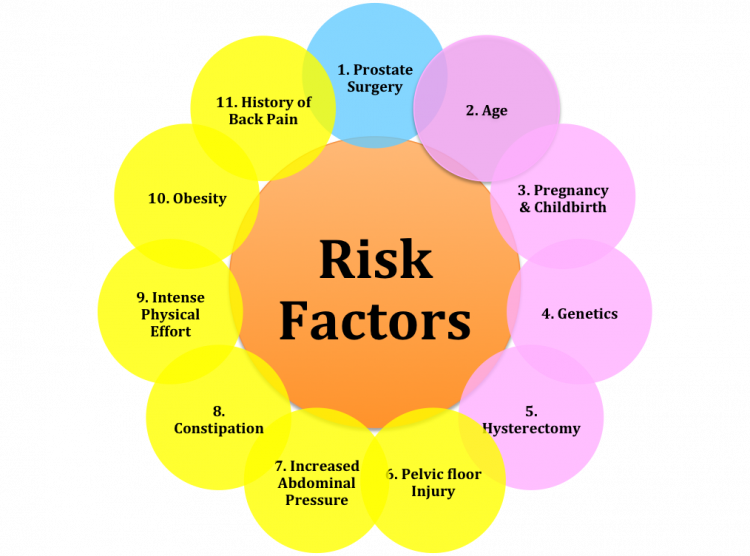Imagine this: you’re at a social event, laughing and enjoying the company of friends. But as the evening progresses, a familiar tightness creeps into your lower abdomen. You feel a sudden, urgent need to use the restroom, but the pain is so sharp and intense that every step sends shivers down your spine. This isn’t just a typical bladder ache. This is the unsettling reality of bladder pain that might be linked to a hidden culprit: pelvic floor dysfunction.

Image: viewfloor.co
The pelvic floor, a group of muscles and ligaments that support the bladder, uterus, and rectum, often gets overlooked in discussions of overall health. Yet, its role in bladder function, and even urinary pain, is crucial. This article delves into the complex relationship between pelvic floor dysfunction and bladder pain, providing a comprehensive understanding of this often-misunderstood condition.
Understanding the Pelvic Floor and Its Impact on Bladder Function
Picture the pelvic floor like a hammock, suspended between your pubic bone and tailbone. It’s a network of muscles that works tirelessly to support your internal organs and control bladder and bowel function. When these muscles become weak, tight, or misaligned, it can disrupt their delicate balance, leading to a multitude of issues, including bladder pain.
Common Types of Pelvic Floor Dysfunction
Pelvic floor dysfunction can manifest in various ways, each impacting bladder function differently:
- Overactive Pelvic Floor: Imagine a tight, rigid hammock. This condition occurs when the pelvic floor muscles are persistently tense, clamping down around the bladder. This constriction can cause urinary urgency, frequency, and pain.
- Weak Pelvic Floor: Picture a saggy, unsupported hammock. In this scenario, the muscles lack the strength needed to adequately support the bladder. This can lead to urinary leakage, difficulty emptying the bladder completely, and pelvic organ prolapse.
- Pelvic Floor Muscle Coordination Issues: Think of a hammock with uneven tension. This occurs when the pelvic floor muscles don’t synchronize properly, resulting in weakened bladder control, urinary urgency, and pain upon urination.
How Pelvic Floor Dysfunction Triggers Bladder Pain
While bladder pain can stem from infections, inflammation, or other conditions, pelvic floor dysfunction can be a significant contributing factor. Here’s how:
- Muscle Tension and Spasms: When the pelvic floor muscles are tight and spasming, it can press on the bladder, causing intense pain and discomfort. This pain may feel like a sharp, burning sensation, or a dull, persistent ache.
- Restricted Urine Flow: As the pelvic floor muscles tighten, they can constrict the urethra (the tube that carries urine out of the body), making it difficult to pass urine smoothly. This can result in pain and discomfort during urination.
- Inflammation and Irritation: Long-term pelvic floor dysfunction can lead to inflammation in the bladder and surrounding tissues. This inflammation can contribute to chronic bladder pain.

Image: games.udlvirtual.edu.pe
Beyond Bladder Pain: A Web of Symptoms
Pelvic floor dysfunction often presents a complex web of interconnected symptoms, not just limited to bladder pain. Common signs to watch out for include:
- Pain during intercourse: This can be a red flag indicating pelvic floor muscle tension, often accompanied by discomfort during pelvic exams.
- Constipation or difficulty emptying the bowels: Pelvic floor dysfunction can affect the rectum, hindering bowel movements.
- Low back pain: The pelvic floor muscles are interconnected with the lower back, and dysfunction can radiate pain to the lumbar region.
- Urinary incontinence: Difficulty controlling urine flow, leading to leaks or accidents.
Determining the Underlying cause of your bladder pain
If you’re experiencing bladder pain, it’s essential to seek professional medical advice to identify the underlying cause. A thorough evaluation includes:
- Physical Exam: A doctor will examine your pelvic floor muscles to check for tenderness, tension, and strength.
- Medical History: You’ll be asked about your medical history, medications, and previous pelvic floor issues.
- Urinalysis: A test to analyze your urine for signs of infection or other abnormalities.
- Pelvic Floor Muscle Biofeedback: This technique uses sensors to monitor your pelvic floor muscle activity and provide feedback for retraining.
Treating Pelvic Floor Dysfunction and Bladder Pain
The good news is that treating pelvic floor dysfunction and bladder pain is often possible with a multidisciplinary approach. This typically involves:
- Physical Therapy: A trained pelvic floor therapist can teach you specialized exercises (Kegel variations, stretches, and relaxation techniques) to strengthen, relax, and improve coordination of your pelvic floor muscles.
- Medications: Your doctor might prescribe medications to address any underlying infections or inflammation, as well as pain relief medications.
- Lifestyle Changes: Avoiding caffeine, alcohol, and certain foods known to irritate the bladder can be helpful. Developing healthy bowel habits through regular exercise and adequate fiber intake can also play a role in relieving pressure on the pelvic floor.
Can Pelvic Floor Dysfunction Cause Bladder Pain
Living a Pain-Free Life: Empowering Yourself
Pelvic floor dysfunction is a treatable condition. By understanding its causes, recognizing its symptoms, and seeking appropriate treatment, you can manage bladder pain and improve your quality of life.
Remember, don’t hesitate to reach out to your healthcare provider for support. They can guide you through the diagnosis and treatment options tailored to your specific needs. Stay informed, advocate for your health, and don’t let bladder pain hold you back from living a fulfilling life.



/GettyImages-173599369-58ad68f83df78c345b829dfc.jpg?w=740&resize=740,414&ssl=1)


